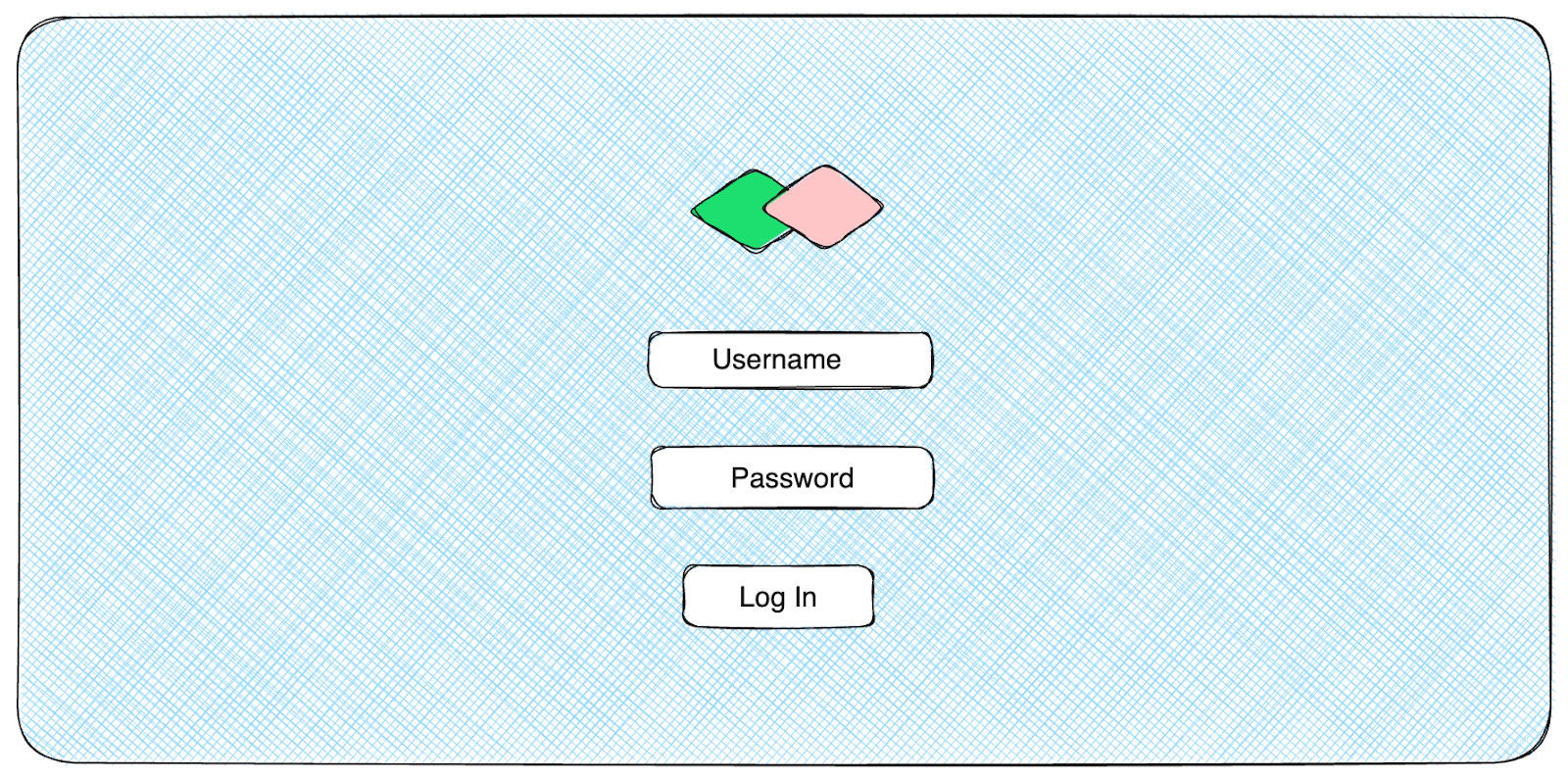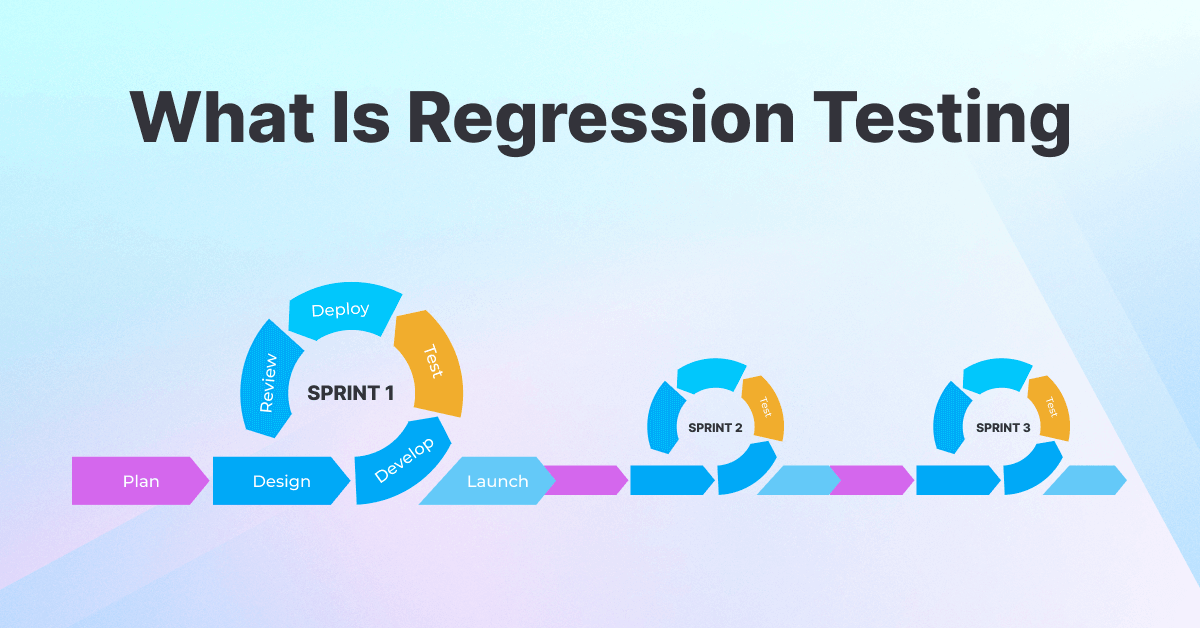Artificial Intelligence (AI) is reshaping software development, offering efficiency and user-centric advancements across its lifecycle. AI facilitates precise requirement analysis and project planning by analyzing extensive user data. It transforms coding through automation tools and Natural Language Processing (NLP)...
Artificial Intelligence (AI) is reshaping software development, offering efficiency and user-centric advancements across its lifecycle. AI facilitates precise requirement analysis and project planning by analyzing extensive user data. It transforms coding through automation tools and Natural Language Processing (NLP) algorithms, reducing manual efforts. AI-driven debugging accelerates error identification and resolution, learning from past experiences for enhanced efficiency.
In testing, AI generates cases, executes diverse scenarios, and analyzes real-time results, improving accuracy and coverage. Personalization is taken to the next level as AI tailors user experiences based on data, fostering engagement. NLP applications simplify interactions, while predictive analytics aids decision-making.
AI’s role in Continuous Integration and Deployment ensures faster and more reliable releases and autonomous software maintenance minimizes downtime. AI is revolutionizing software development, promising an exciting future marked by intelligence, personalization, and reliability.
Test automation, enhanced by AI, streamlines tasks by learning from past results and predicting future issues. AI-driven test generation intelligently analyzes codebases, identifies vulnerabilities, and generates comprehensive test cases, improving efficiency and coverage.
AI aids in defect prediction by analyzing historical data and prioritizes testing efforts in high-risk areas. According to Grand View Research, the global market size for AI-enabled testing reached USD 414.7 million in 2022, and it is expected to experience a compound annual growth rate (CAGR) of 18.4% from 2023 to 2030.
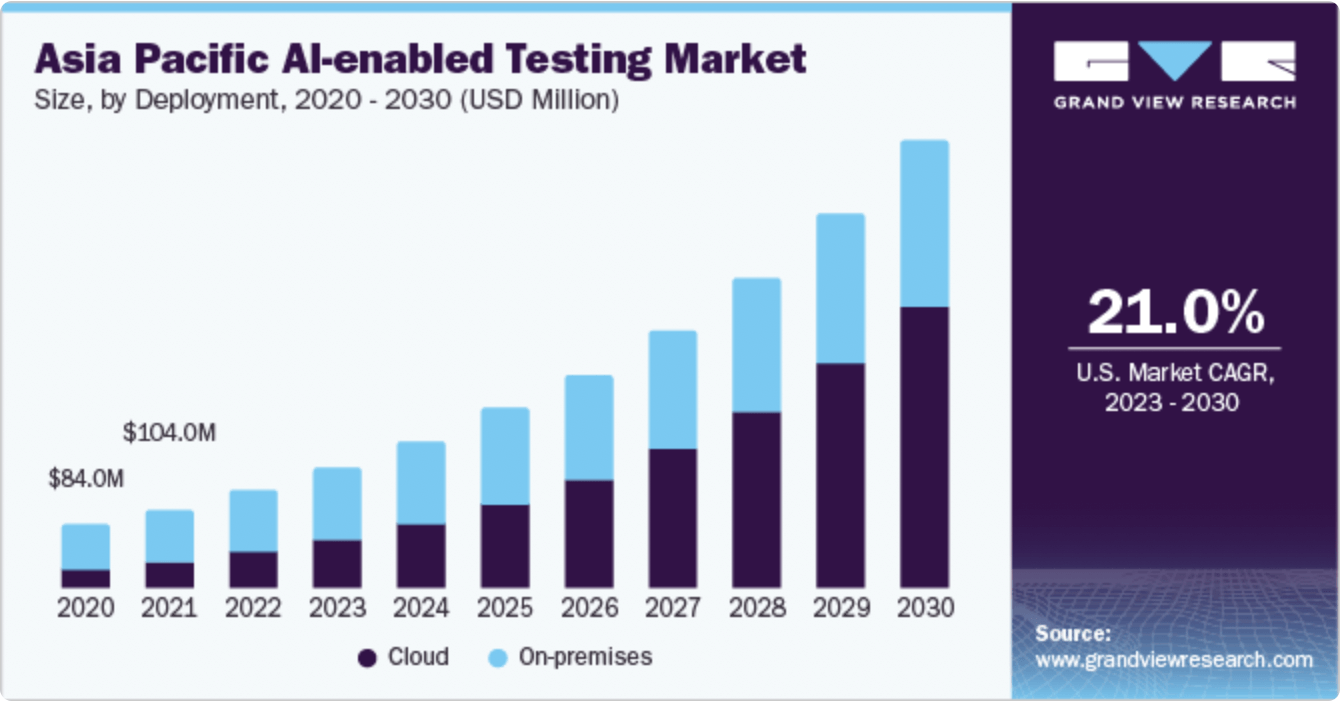
Image source
Intelligent bug reporting captures relevant information automatically, and AI assists in triaging bugs based on severity and impact. Real-time monitoring with AI detects anomalies and patterns, enabling proactive issue resolution.
The Role of AI in Quality Assurance
Artificial Intelligence (AI) is a transformative technology revolutionizing various industries, particularly quality assurance in software development. It addresses challenges associated with human assistance in manual testing, reducing the risks of human errors, cost, and time inefficiencies, especially in cross-platform application development.
AI improves the testing process by predicting client behavior, detecting fraud not captured by traditional tests, and facilitating targeted marketing through automated activities. It eliminates test coverage overlaps, optimizes automation, and enhances agility and predictability through self-learning.
AI testing tools enable QA teams to improve testing efficiency with accelerated timelines and increased accuracy. According to Gartner‘s Competitive Landscape Application Testing Services report, intelligent automation is expected to generate a 20% additional savings in application testing services by 2021.
In quality assurance, AI streamlines processes, reduces testing time, ensures comprehensive test coverage, focuses on defect hubs, and accelerates release cycles for faster time to market. AI testing tools, including visual verifications, visual regression testing, image-based testing, AI spidering, API testing, and automated testing tasks, contribute to making testing more efficient and less reliant on manual updates. As AI becomes more dominant, testers can create, execute, and analyze software test cases more easily and readily identify controls and links between defects and software components.
Intelligent Test Automation
Intelligent Test Automation (ITA) is a software testing approach that leverages AI algorithms to enhance script creation, stabilize automation processes, and provide analytics for more effective debugging and decision-making. ITA offers several benefits, including reducing manual workload, enabling faster testing on multiple devices, and facilitating quicker feedback loops for developers.
The adoption of ITA addresses challenges in traditional test automation, such as complex test creation, reporting noise, and the need for parallel testing. ITA combines machine learning, process automation, and AI to create smart testing workflows. It acts as an extra layer that addresses challenges in automation, reducing manual efforts and enabling self-improvement.
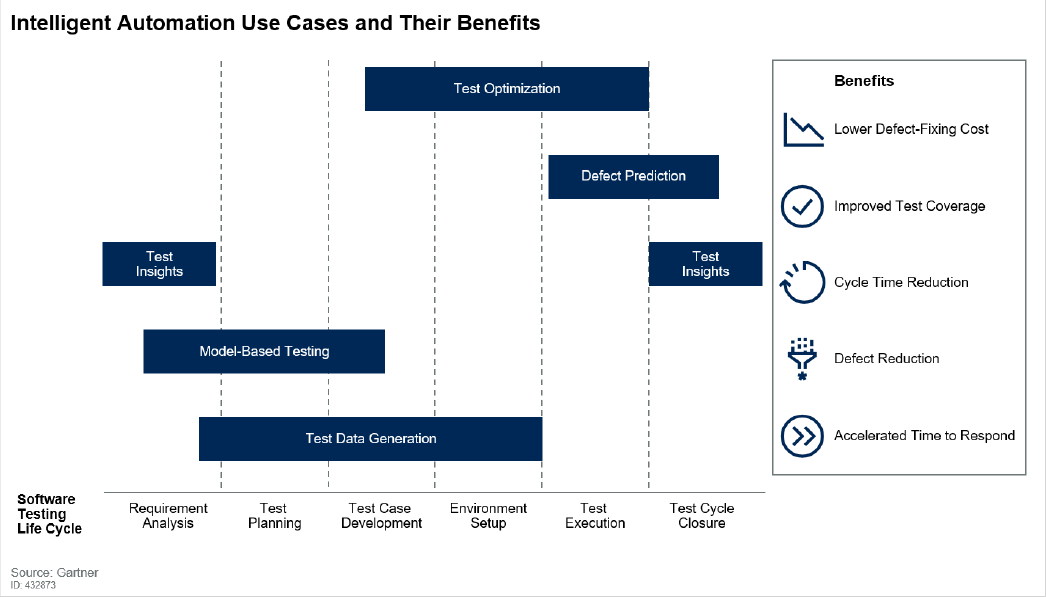
Intelligent Test Automation is transforming software testing, making quality easier to scale and achieve. While AI and ML advancements have significantly improved testing processes, human oversight remains crucial for addressing certain quality activities. ITA empowers testers to be more efficient and strategic in focusing on critical aspects of testing.
| Technology and Focus on Process | Automation is process-driven, concentrating on automating repetitive and rule-based processes. | IA revolves around data-driven processes and incorporates artificial intelligence (AI) and Machine learning (ML) technologies. |
| Test case generation and maintenance | Test Automation cases are high maintenance and not easily reusable, leading to increased maintenance costs and lower efficiency in test case generation. | Utilizes Model-Based Testing, employing a TDD/BDD approach that automatically generates and maintains test cases, resulting in reduced maintenance costs. |
| Ability of self-evolve | Follows rules to automate tasks with minimal variations, typically confined to repetitive tasks. | Learns and adapts to real-time data using self-healing capabilities, allowing for continuous improvement and adaptation. |
AI-Powered Code Reviews
AI code review is an automated process that utilizes machine learning models to examine software code, identifying issues and inefficiencies while providing recommendations for improvement. It significantly enhances the development process by offering speed, scalability, and consistent accuracy, making it a valuable tool for producing high-quality software efficiently.
Key Components of AI Code Review
Static Code Analysis: Examines code without execution to identify syntax errors, coding standards violations, and security vulnerabilities, which is particularly beneficial for large and complex codebases. Dynamic Code Analysis: Involves executing the code to identify runtime errors and performance issues, providing a more comprehensive understanding of the code’s behavior. Rule-Based Systems: Use predefined rules to ensure code adherence to established standards and best practices, enhancing consistency and reliability. Large Language Models (LLMs): Understand code structure deeply, identify nuanced errors, and generate human-like comments for better comprehension, applicable across various programming languages.Advantages of AI for Code Review
Efficiency and Speed: AI expedites the code review process, analyzing code quickly and making improvement recommendations in a fraction of the time compared to traditional methods. Consistency and Accuracy: AI ensures consistent and accurate reviews unaffected by factors like fatigue or bias, thereby enhancing the overall quality of the software. Detection of Hard-to-Find Errors: AI is adept at identifying subtle or conditional errors that might be challenging for manual reviews, reducing the risk of bugs slipping through undetected. Enhanced Learning and Skill Development: AI code review serves as a valuable learning tool for developers, providing instant feedback and recommendations on a wide variety of coding issues to improve skills.AI-powered code review emerges as a transformative force in software development, offering unparalleled speed, accuracy, and efficiency. While presenting significant advantages, developers must balance the benefits with potential concerns, ensuring a harmonious integration of AI tools while preserving these.
Root Cause Analysis with AI
Root Cause Analysis (RCA) is a critical process that involves identifying and addressing the essential factors leading to quality issues. Artificial Intelligence (AI) plays a pivotal role in enhancing RCA by utilizing advanced algorithms and models. AI’s capacity to analyze vast and diverse datasets enables it to detect patterns, anomalies, and correlations that might elude human observation. This data-driven approach allows AI to generate hypotheses and recommendations and even automate corrective actions.
AI facilitates faster and more accurate identification of root causes, reducing the time and effort required for problem-solving. It excels in handling complex scenarios involving multiple interacting factors. AI leverages historical and real-time data to learn from past experiences, predict trends, and proactively prevent potential quality issues. Moreover, it offers prescriptive solutions, enabling manufacturers to implement preventive measures effectively.
Key steps include defining the project’s scope, collecting and preparing relevant data, selecting suitable AI techniques, and monitoring corrective actions and feedback. Identifying quality problems, specifying outcomes, defining key performance indicators (KPIs), addressing data quality and security issues, and ensuring collaboration between humans and AI are integral to successful implementation.
However, challenges and limitations exist in the realm of AI-driven RCA. Data availability and quality are crucial factors, as incomplete or inaccurate data can impact the effectiveness of AI analysis. Explainability and transparency are concerns, as AI-generated results may be challenging for humans to interpret, raising issues of trust and accountability. Effective collaboration between humans and AI, with clearly defined roles, is essential to overcome these challenges.
Companies are advised to adopt best practices to maximize the benefits of AI for RCA. Starting with small-scale implementations and gradually scaling up ensures a smooth integration process. Involving stakeholders and end-users throughout the project fosters collaboration and aligns the AI solution with practical needs. Leveraging existing resources and platforms helps manage costs and complexity.
Continuous monitoring and measurement of AI performance allow for ongoing improvements. Staying informed about the latest developments and trends in both AI and RCA ensures that the implementation remains compatible with the evolving manufacturing environment and meets stakeholders’ expectations.
Natural Language Processing for Improving Test Automation
Natural Language Processing (NLP) is a smart language combining computer science, information engineering, and artificial intelligence that focuses on the interaction between computers and human languages. NLP involves programming computers to process and analyze large amounts of natural language data.
In NLP applications, three core components are crucial: Understanding, Processing, and Generation.
Understanding: Building vocabulary. Processing: Creating meaningful statements. Generation: Creating meaningful context.To enhance test automation with NLP capabilities, testers input information such as user stories, acceptance criteria, test scenario descriptions, and a dictionary of keywords. NLP techniques analyze and process this information into frames, which are then converted into Unified Modeling Language (UML) to generate automatically generated test cases. The advantages of using NLP in test automation include the potential for almost 100% test coverage, reduced time spent on test creation, and increased productivity and reusability of tests.
When applying NLP in automation, there are opportunities to enhance the efficiency of test automation. The challenges with manual test case creation in software testing, such as human error, continuous rewriting of test cases during regressive testing, and time limitations for creating or amending tests, can be addressed with the integration of NLP capabilities.
The benefits of NLP in test automation make it valuable for improving efficiency in software testing processes. The primary goal of NLP is to enable machines to understand, interpret, and generate human language in a way that is both meaningful and contextually relevant.The positive outcomes include enhanced test coverage, time savings, and improved productivity and reusability of tests.
Predictive Analysis with AI
Predictive analytics with AI involves using AI methods to evaluate data and generate predictions, including deep learning, computer vision, natural language processing, and reinforcement learning. AI is capable of handling enormous, complicated data sets, uncovering hidden patterns, and adapting to the environment.
Businesses can employ AI for predictive analytics to predict customer behavior, demand, supply, pricing, risks, fraud, anomalies, outcomes, scenarios, and actions based on various data sources and goals.
For example, predicting customer behavior can enhance marketing, sales, and service strategies, while predicting demand and pricing can optimize inventory and increase profitability. About 220.67 million people worldwide actively use Netflix each month, and the annualized cost of Netflix’s recommendation engine is close to $1 million.
Netflix uses predictive analysis to enhance streaming quality and underscore the tangible benefits of employing AI in predicting and preventing defects. Additionally, AI can predict outcomes and scenarios based on simulations, models, and optimization, facilitating informed decision-making.
The benefits of using AI for predictive analytics include increased accuracy and reliability, automation of workflows for faster results, resource savings, and the ability to uncover new opportunities and insights. This can provide a competitive edge, improve customer loyalty, and enhance overall satisfaction.
Anomaly Detection with AI
Anomaly detection, also known as outlier detection, is a crucial aspect of Artificial Intelligence focused on identifying unusual patterns that deviate from expected behavior. Anomaly detection systems assess and compare data points within a dataset, singling out those that stand out from the normal pattern. Techniques include statistical methods, machine learning algorithms (supervised or unsupervised), and hybrid approaches to create robust detection systems.
Anomaly detection is vital in various domains, such as cybersecurity, data management, and proactive monitoring of dynamic systems. It aids in responding to cybersecurity threats, managing expanding datasets, and adopting a proactive approach to anomalous behavior. The technology finds broad applications in finance, healthcare, manufacturing, and more, contributing to better decision-making, efficiency, and innovation.
Machine learning is crucial for anomaly detection due to the increasing complexity and volume of data in modern businesses. Machine learning handles vast amounts of diverse data, particularly unstructured data, offering real-time analysis and resource efficiency. It enhances security, fortifying systems against potential threats and weaknesses, contributing to a more secure and robust operational environment.
Use cases of AI in anomaly detection include intrusion detection in cybersecurity, fraud detection, health monitoring in healthcare, defect detection in manufacturing, application performance management, ensuring product quality, enhancing user experience in online business and gaming, and identifying inefficient equipment and tools in manufacturing.
These use cases highlight the versatility and significance of anomaly detection across various industries.By detecting these anomalies in real-time, businesses can take immediate action to mitigate the risk of fraud, such as blocking suspicious transactions, flagging accounts for further investigation, or implementing additional security measures to protect customer data.
Real-Time Bug Detection with AI
AI-powered bug detection tools have become a crucial asset for developers, revolutionizing the approach to identifying and addressing software issues. These tools, equipped with machine learning algorithms, play a pivotal role in the software development life cycle by proactively identifying potential bugs and vulnerabilities. Their advantages are substantial, contributing to early bug detection, improved code quality, and efficiency gains.
One of the critical benefits of AI-powered bug detection is the capability to identify issues early in the development cycle. AI tools analyze codebases comprehensively, recognizing patterns that indicate potential problems. This allows developers to intervene and resolve issues before they impact the end-user experience, preventing disruptions and security risks.
Furthermore, AI bug detection tools significantly enhance the overall quality of code. By identifying bugs and vulnerabilities that might escape manual detection, these tools ensure a higher standard of code quality. Their comprehensive code analysis helps address potential issues that could compromise security or disrupt the software’s functionality.
Time savings and minimizing manual efforts are other notable advantage. Identifying and fixing bugs can be a time-consuming process. AI-powered tools automate this process, providing developers with precise insights on where to focus their attention. This automation allows developers to allocate their time and resources more efficiently, redirecting efforts toward more complex tasks and strategic aspects of software development.
It’s essential to acknowledge considerations and limitations in using AI bug detection tools. False positives and negatives are potential challenges, as these automated systems may inaccurately identify issues or fail to detect actual bugs. Human intervention becomes crucial for manual validation and verification to ensure the accuracy of flagged issues.
AI bug detection tools are limited to known patterns. While excelling at detecting common bugs, they may need help with novel or uncommon issues that fall outside the scope of their training data. Developers are advised to remain vigilant and employ additional testing methods to detect such bugs.
For successful implementation, developers should choose the right tool based on their project’s requirements and programming languages. Continuous learning and improvement are essential, involving the regular training of the AI tool with relevant and up-to-date data to enhance its accuracy over time. Additionally, human validation and verification play a vital role in interpreting flagged issues accurately, ensuring a balanced and effective bug detection process.
Conclusion
The integration of Artificial Intelligence (AI) into software development, testing, predictive analytics, anomaly detection, bug detection, and code reviews represents a transformative leap forward. AI not only expedites processes but fundamentally alters how developers approach quality assurance. Its applications in testing promise more efficient and responsive development cycles. Predictive analytics with AI offers businesses strategic foresight, while anomaly detection and bug detection contribute to enhanced security and code quality.
The synergy of Natural Language Processing and AI elevates test automation’s efficiency. Intelligent Test Automation emerges as a smart, self-improving testing paradigm. The benefits of AI code review in speed, accuracy, and learning underscore its value. Root Cause Analysis benefits significantly from AI’s data analysis capabilities. Challenges exist, but embracing best practices ensures a harmonious integration. As AI evolves, its promise for shaping the future of software development remains substantial.





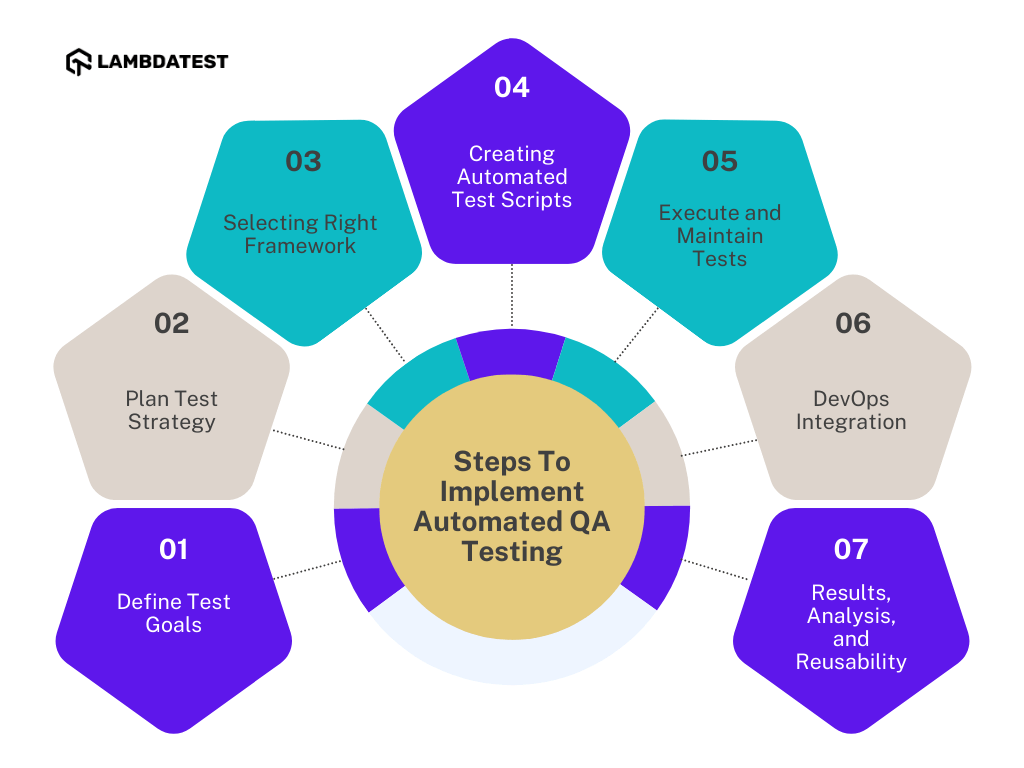
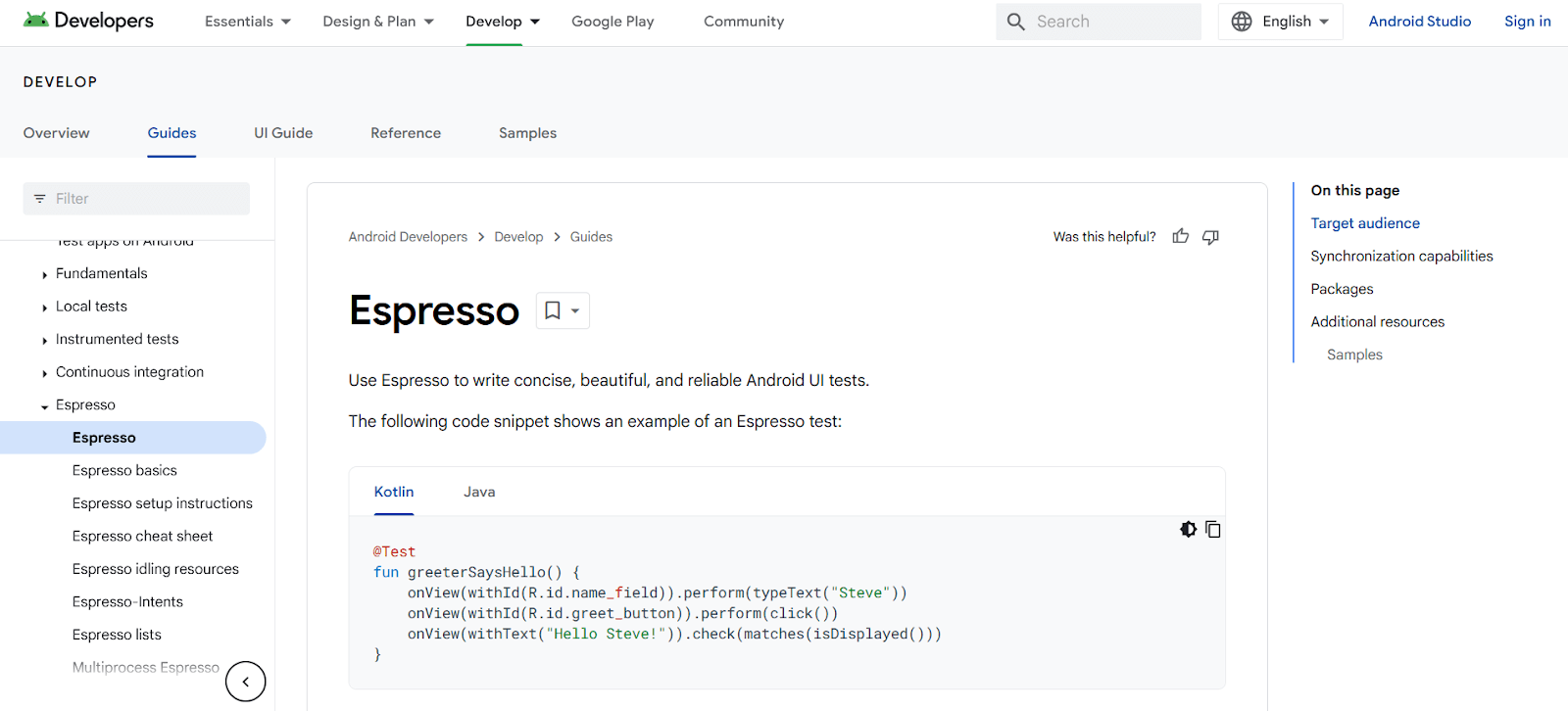

![22 Best iOS Emulators for PCs (Windows and macOS) [2024]](https://www.lambdatest.com/blog/wp-content/uploads/2023/12/unnamed-2023-12-20T140252.138-1-1.png)
